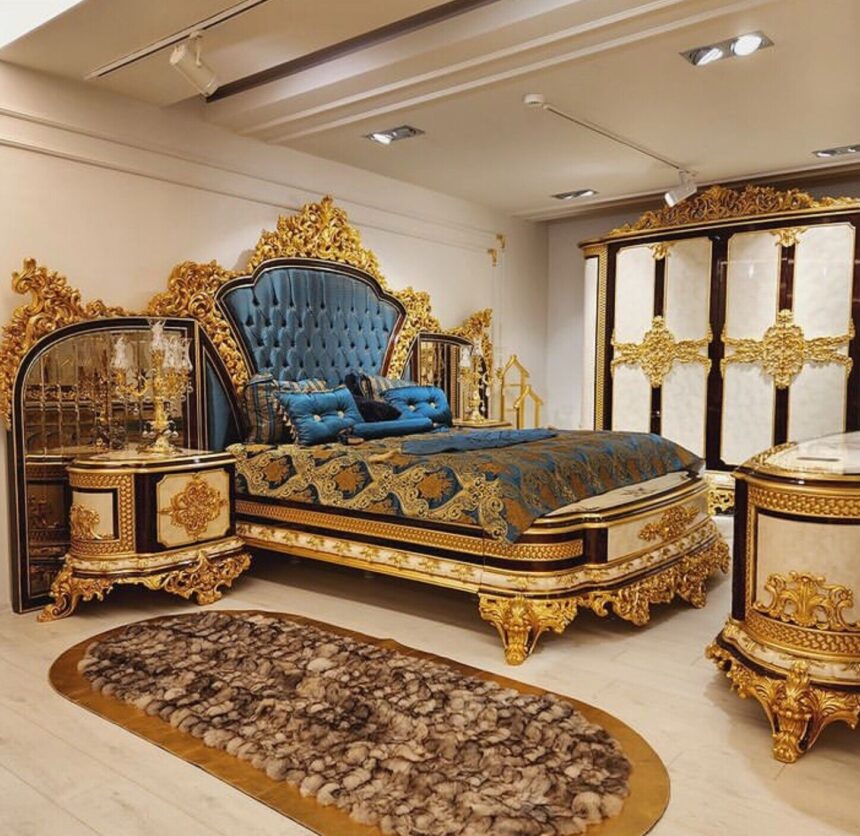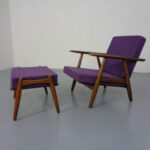The History of Vintage Furniture: From Mid-Century Modern to Art Deco

Vintage furniture has become increasingly popular in recent years, with many people seeking out unique and stylish pieces to add character to their homes. From mid-century modern to art deco, vintage furniture has a rich history that spans several decades. In this article, we will explore the evolution of vintage furniture and how it has influenced modern design.
The Origins of Vintage Furniture
The term “vintage” refers to items that are at least 20 years old, but not yet antique. Vintage furniture can be traced back to the early 20th century, when designers began experimenting with new materials and styles. The first major movement in vintage furniture was art deco, which emerged in the 1920s and 1930s.
Art Deco
Art deco was a style that originated in France and quickly spread throughout Europe and the United States. It was characterized by bold geometric shapes, bright colors, and luxurious materials such as marble and gold. Art deco furniture was often designed to be functional as well as decorative, with pieces such as cocktail cabinets and dressing tables becoming popular.
One of the most famous art deco designers was Émile-Jacques Ruhlmann, who created elegant and sophisticated pieces that were highly sought after by the wealthy elite. Ruhlmann’s furniture was known for its clean lines, rich materials, and attention to detail.
Mid-Century Modern
In the 1950s and 1960s, a new movement in vintage furniture emerged: mid-century modern. This style was characterized by clean lines, simple shapes, and a focus on functionality. Mid-century modern furniture was designed to be practical and comfortable, with pieces such as lounge chairs and sofas becoming popular.
One of the most famous mid-century modern designers was Charles and Ray Eames, who created iconic pieces such as the Eames Lounge Chair and Ottoman. The Eames’ furniture was known for its innovative use of materials, such as molded plywood and fiberglass, and its sleek, modern aesthetic.
The Rise of Vintage Furniture
While vintage furniture has always been popular among collectors and enthusiasts, it wasn’t until the 1990s that it began to gain mainstream appeal. This was due in part to the rise of the internet, which made it easier for people to find and purchase vintage furniture online.
Another factor was the growing interest in sustainability and eco-friendly living. Vintage furniture is often seen as a more sustainable option than buying new furniture, as it reduces the demand for new materials and reduces waste.
The Benefits of Vintage Furniture
There are many benefits to buying vintage furniture. Firstly, it is often more affordable than buying new furniture, as vintage pieces have already depreciated in value. Secondly, vintage furniture is often of higher quality than modern furniture, as it was made to last and withstand the test of time.

Finally, vintage furniture is unique and adds character to a home. It can be used to create a one-of-a-kind look that cannot be replicated with modern furniture.
The Future of Vintage Furniture
As vintage furniture continues to gain popularity, it is likely that we will see more designers and manufacturers creating new pieces that are inspired by vintage styles. This trend is already evident in the rise of “retro” furniture, which takes inspiration from mid-century modern and art deco styles.
However, it is important to remember that vintage furniture is not just a trend, but a valuable part of our design history. By preserving and appreciating vintage furniture, we can learn from the past and create a more sustainable and stylish future.
Conclusion
Vintage furniture has a rich history that spans several decades, from the bold geometric shapes of art deco to the clean lines of mid-century modern. While vintage furniture has always been popular among collectors and enthusiasts, it has gained mainstream appeal in recent years due to the rise of the internet and growing interest in sustainability.
Buying vintage furniture has many benefits, including affordability, quality, and uniqueness. As vintage furniture continues to gain popularity, we can expect to see more designers and manufacturers creating new pieces that are inspired by vintage styles. However, it is important to remember that vintage furniture is not just a trend, but a valuable part of our design history that should be preserved and appreciated.










